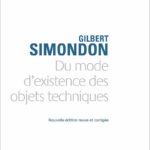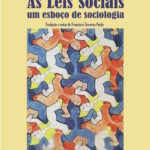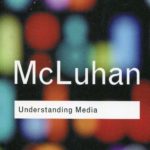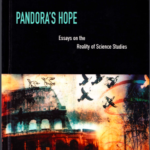
Maxwell’s demons everywhere
“[374] […] Irreversibility is not just a melancholy operator that sets limits to structural analysis. Seen as a break in symmetry, it is an essential aspect of the spirit in which Levi-Strauss works with kinship systems and myths. Symmetry and asymmetry form a pair of oppositions. Order is not natural but an artifice in which a possibility is seen to be active: galaxies, crystals, living forms are islands of symmetry in an ocean of entropy. […] [375] […] Time is irreversible because as time passes entropy increases. Conversely, machines that preserve some symmetry, reversible machines, require the arrest of the processes of entropy. Without this violation neither life nor culture would exist. The physicist James Clerk Maxwell represented this violation anthropomorphically as a demon placed in the doorway between the two compartments, opening and shutting the door depending on what it sees (Wiener I96I [I948]:56-58; Monod I972:chap. 3; Prigogine and Stengers 1979). In other words, Maxwell’s demon is guided by information, and it uses this information to preserve improbable states. Thus by shutting the door most of the times an object tries to escape from compartment A into compartment B and opening it most of the times an object tries to return from B to A, it keeps A “marked” and B “unmarked.” By preserving a discrete and improbable state in this way, the demon prevents the increase of entropy. Maxwell’s demon is a machine for cancelling time in the only form in which its direction is recognizable: the increase of disorder, or entropy. […] We may imagine Maxwell’s demon’s assuming the form of any of a variety of mechanisms: repression, collective conscience, tradition, voting, constitutions, rules, taboos, preferences, maps, styles, and cosmologies. An antientropy machine restricts the universe of possible worlds, introducing constraints on the to-and-fro movement of objects. This is just what happens with marriage rules and taboos in small-scale societies or with customs and immigration regulations, educational systems, and even styles in large-scale ones. Another example might be the controlled distribution of vowels in the poetry of Pushkin first studied by Markov. Maxwell’s demons might also patrol cultural frontiers, operating classificatory ethnic machines. It is a matter of keeping objects in the same boxes (endo-machines, which include ethnic machines) or of keeping them in different boxes (exo-machines, which include marriage machines). The point of the model is that the intrinsic properties of the objects do not matter; what matters is how objects are distributed so as to assert an opposition. In this sense, the model accords well with theories of ethnicity that make political criteria (either the decision of group A or conflict between this decision and the decision of group B) decisive in marking ethnic boundaries. […] If Maxwell’s demon were perfectly efficient, entropy could be cancelled and perpetual-motion machines would be possible. But it is not easy to free oneself from time. Wiener (I96I [I948]:57-58) describes what will eventually happen to a Maxwell demon: “the demon can only act on information received…. In the long run … it receives a large number of small impressions, until it falls into ‘a certain vertigo’ and is incapable of clear perceptions.” The point is that the demon is part of the [376] system that it controls and is itself subject to entropy. In time, like a drunken porter it ceases to discriminate, through the influence of the clientele with which it is in constant contact, and becomes unable to deny entry to undesirable customers. Perhaps because it cannot obtain information with impunity, perhaps because it finds it difficult to rid itself of useless memories accumulated over the centuries (see Bennett and Landauer I985, Bennett I987), a Maxwell demon also dies. […] Though not immortal, a Maxwell demon may have a long career – but only if it is fed from without. It is as if its discernment had to be strengthened by the injection of energy and information from the outside – a symbolic re-creation, an exchange with neighbors, communication with outside political movements (as in Lenin’s What Is To Be Done?, where the proletarian organization comes from without) (Almeida I988). Dissipative structures, according to Prigogine and Stengers (1979), produce organization from chaotic fluctuations in systems that are not in equilibrium. But these antientropic machines can function only locally because they depend upon energy from an external source. (The problem of modern society would then be that it has eliminated the “external,” which up to now has been constituted by a set of different cosmological, sociological, technological, and ecological universes.) From the metaphor of a mechanical and global universe we move to a Markovian and local universe that struggles to sustain its invariance in the face of the continuing and insidious threat of disorder.” (Barbosa de Almeida 1990:374-6)
“[244] […] Let us now provide a new account of laboratory life using the notion of order together with Brillouin’s famous mythical character: Maxwell’s demon. The simplest version is the following (Singh, 1966): […] A demon placed in a cold oven would be able to increase the amount of heat by allowing the swifter molecules to gather in one part of the oven and by keeping them there. In order to do this, the demon needs information about the state of the molecules, a small trap which will let them come or go depending on their quality, and an enclosure in which to prevent the sorted molecules from escaping and returning to their random state. We now know that the demon himself consumes a small amount of energy in doing his work. “It is impossible to get something for nothing, even information,” as the saying goes. […] This account provides an illuminating analogy with what goes on in the laboratory. […] [245] […] Even insecure bureaucrats and compulsive novelists are less obsessed by inscriptions than scientists. Between scientists and chaos, there is nothing but a wall of archives, labels, protocol books, figures, and papers. But this mass of documents provides the only means of creating more order and thus, like Maxwell’s demon, of increasing the [246] amount of information in one place. So it is easy to appreciate their obsession. Keeping track is the only way of seeing a pattern emerge out of disorder […]. [247] […] Maxwell’s demon provides a useful metaphor for laboratory activity because it shows both that order is created and that this order in no way preexists the demon’s manipulations. Scientific reality is a pocket of order, created out of disorder by seizing on any signal which fits what has already been enclosed and by enclosing it, albeit at a cost. […] [247] […] Maxwell’s demon creates order.” (Latour e Woolgar 1985:244-7)
BARBOSA DE ALMEIDA, Mauro W. 1990. Symmetry and entropy: mathematical metaphors in the work of Lévi-Strauss. Current Anthropology 31(4):367-85.
LATOUR, Bruno; WOOLGAR, Steve. 1986. Laboratory life: the construction of scientific facts. Princeton: Princeton University Press. [1979]





 LaSPA is located at the Institute of Philosophy and Human Sciences (
LaSPA is located at the Institute of Philosophy and Human Sciences (